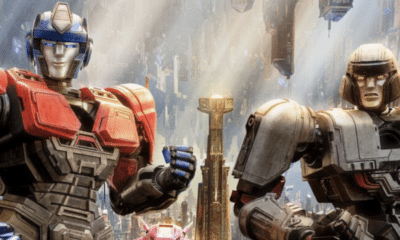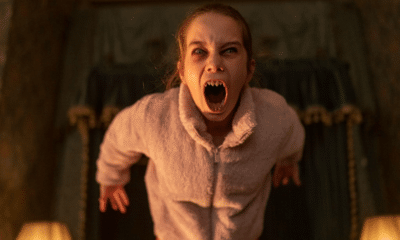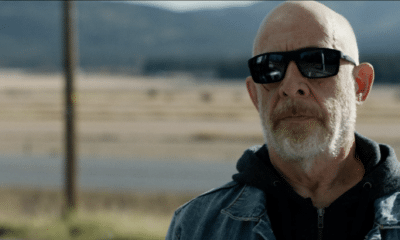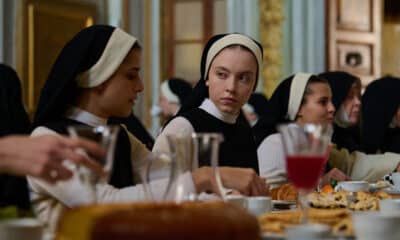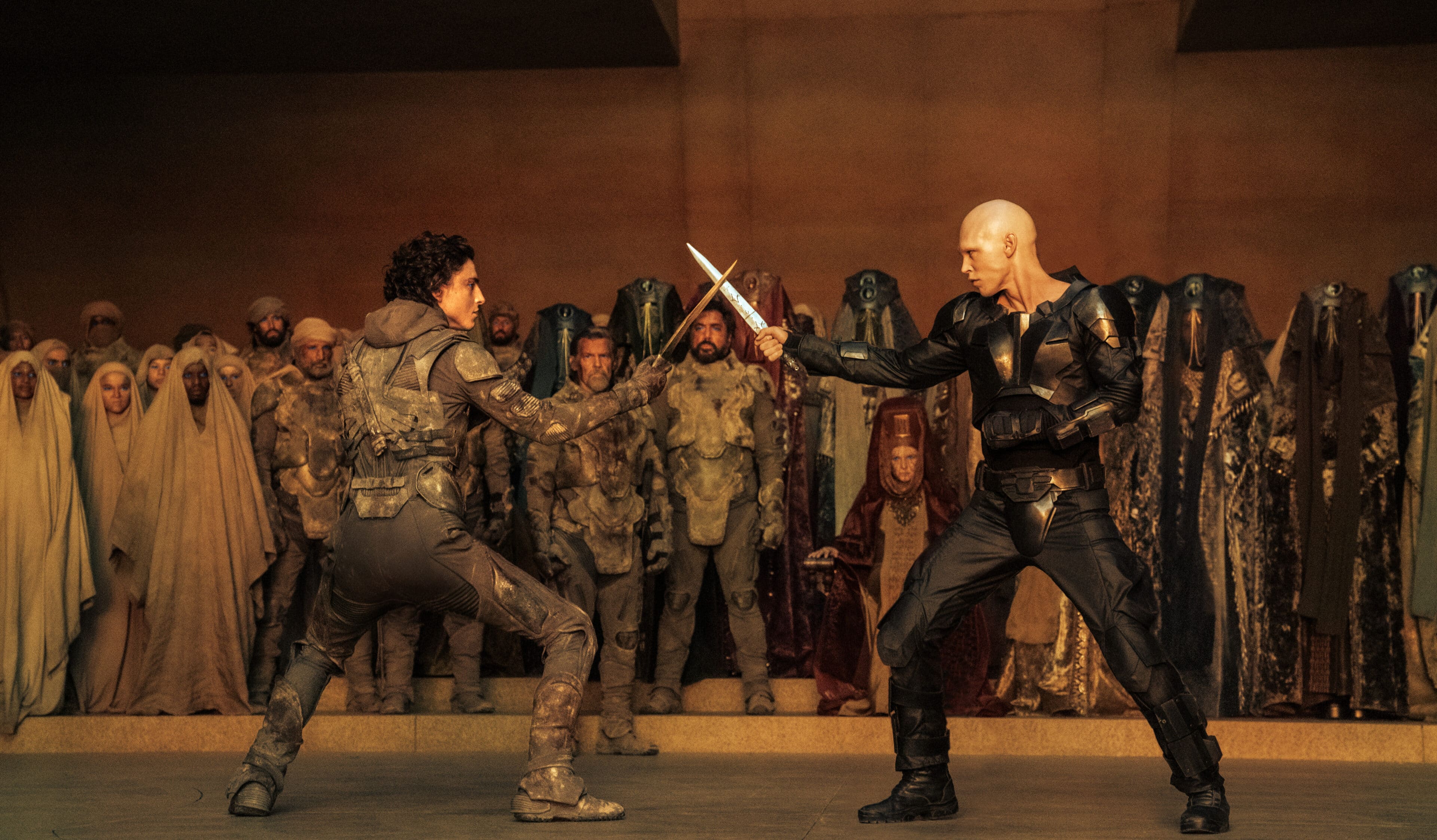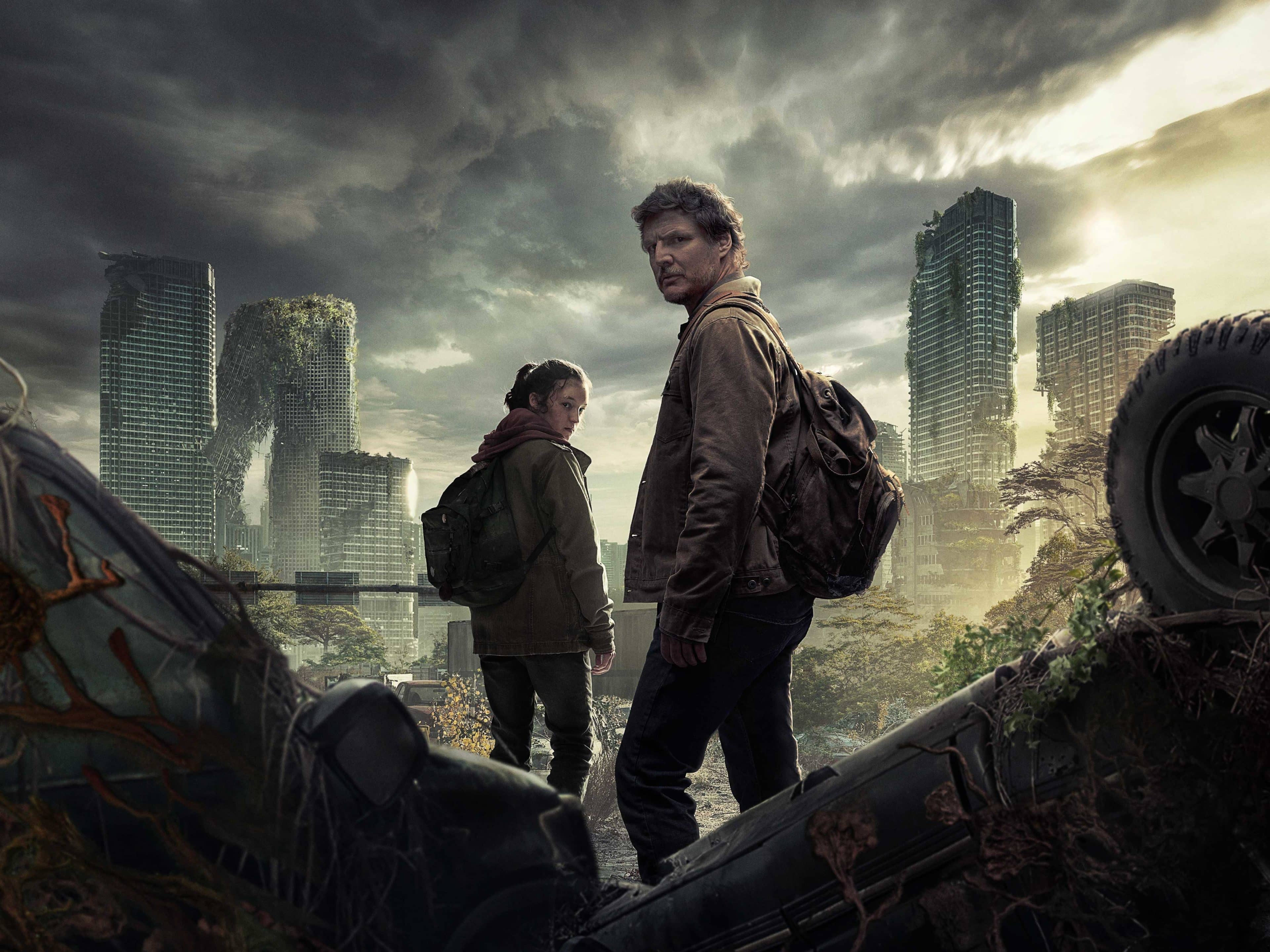 On 15th May 2014, Toho’s greatest monster will return to the big screen in an American reboot. With just 4 weeks to go, we here at THN are counting down the GODZILLA back catalogue.
On 15th May 2014, Toho’s greatest monster will return to the big screen in an American reboot. With just 4 weeks to go, we here at THN are counting down the GODZILLA back catalogue.
Director: Shusuke Kaneko
Starring: Chiharu Niiyama, Ryudo Uzaki, Masahiro Kobayashi, Shiro Sano, Takashi Nishina, Kaho Minami, Shin’ya Ohwada, Kunio Murai, Hiroyuki Watanabe
Plot: Godzilla returns, but this time there is some mystical force motivating him. While he goes on a rampage of destruction, a young reporter investigates rumours of three guardian monsters that will defend Earth.
With the previous effort not doing so well at the box office, it was time to bring in some of Godzilla’s better known friends…although that wasn’t always the case. Mothra and King Ghidorah may have eventually joined the line-up of monsters to take on the big G, which also included Baragon, who is sadly absent from the title, but their spots were originally intended for Anguirus and Varan. Shusuke Kaneko had originally wanted some of Toho’s lesser known monsters, as he wanted Godzilla to be the most powerful one on screen. Toho eventually twisted his arm, which resulted in less powerful and revised versions of both Mothra and Ghidorah. It’s interesting that so many people are so against changes made to the Godzilla of the 1998 American film, when this film, a highly regarded favourite, makes just as many changes to the mythology of all monsters present.
Such changes were allowed though as Toho had hired Kaneko off the back of his success with the Heisei trilogy of Gamera films. Despite having made Godzilla’s studio arch-enemy into a successful franchise that easily shook off the comedy aspect applied by Mystery Science Theatre 3000, Toho knew a good thing when they saw it, and so it was up to Kaneko to breathe new life into the King of The Monsters. Kaneko wouldn’t return to the Godzilla franchise, but he achieved even more success with the DEATH NOTE films. His time with Godzilla may have been short, but the epically titled GODZILLA, MOTHRA AND KING GHIDORAH: GIANT MONSTERS ALL-OUT ATTACK became the highest grosser of the Millennium series, as well as arguably being the best Godzilla movie since the original.
The film starts with some military folk being trained in the art of Godzilla defence. This scene iterates that Godzilla has not attacked since 1954, once again rebooting everything that has come before. However, the scene also adds an interesting twist to the tale as it may very well ignore previous Toho Godzilla films, but it actually acknowledges the 1998 Hollywood film. During a talk it is noted that monsters have been appearing since 1954, with a beast similar to Godzilla having been spotted in New York in 1998. Interested trainees ask if that was actually Godzilla and the reply is that although American forces identified it as such, Japanese intel suggests it was a different beast. This isn’t played for knee slapping laughs, but it does allow Roland Emmerich’s film a certain amount of dignity by writing it in as canon, but at the same time distancing it. This is also where talk of a missing submarine, known as a Satsuma (named after the man in the Godzilla suit during the Heisei era, Kenpachiro Satsuma).
We’re shown the last movements of the Satsuma as it encounters Godzilla, although not explicitly identified by those onboard the submarine itself. He’s accompanied by some very JAWS-esque music before the gigantic title slaps itself across the screen with all the whistles and bells it deserves. The plot then moves to journalist Yuri Tachibana (Niiyama) who is making a supposed documentary on myths and legends, but the way her associates throw stones into the water for ‘unexplainable’ activity suggests she’s willing to twist the truth to gain success. Yuri is actually the daughter of vengeful Admiral Taizo Tachibana (Uzaki), a man whose parents were killed back in 1954. Once again it’s that convenient mixture of relatives and occupations that allow for both to explore and encounter Godzilla, but this relationship is the best representation of such contrivance so far. In a way they each represent generational beliefs, with the daughter looking for fame and to forward her career, while the father holds honour and family sacred. During her fake documentary making, Yuri notices an old man standing in the woods, accompanied by typical sinister music.
We’re then treated to a number of monster attacks, with the difference being that only groups of your average disrespectful horror movie dicks seem to be punished. A motorcycle gang terrorising the local village run afoul of a rampaging Baragon, while some teens, having just stolen from a local convenience store, are dragged under the lake by Mothra. Punishing the bad makes these monsters seem less evil right off the bat, while still showing themselves as threats. Yuri starts to investigate the occurrence of the monsters and discovers a strange book that references the three guardians who will protect the Earth. Interestingly enough, this all leads to more supernatural and mystical mythology than Godzilla is accustomed to. It also provides a very engaging plot that seems to follow the investigatory horrors that made J-Horror such a dominant force in international cinema with films such as RINGU and KAIRO. It works very well and also gives the film a very different edge. It may have just been an idea to ride on the success of what would become classic horrors, but it’s done with thought and skill.
When Godzilla finally arrives, in direct comparison with the guardians, he is shown as killing innocents, which include a group of teenagers having a regular conversation, and a young girl in hospital. He doesn’t aim to kill them directly, but Kaneko has made a real effort to make this the first truly evil Godzilla since MOTHRA VS. GODZILLA back in 1964. It’s also revealed by the creepy forest dwelling man, Hirotoshi Isayama (played by Amamoto in his last ever screen appearance), that Godzilla has absorbed not just nuclear energy, but also the souls of all the forgotten soldiers left to die during WWII. This heavy anti-war message gives the film more meaning and heart, as well as holding up a mirror to the acceptance of atrocities during WWII. This is something that is still relevant today, with current Japanese politicians still attempting a revisionist approach to teaching history in school. This change may seem jarring, but it’s also interesting that Kaneko believes this to be more realistic than pseudo-science, which could open a great debate as to what’s more believable, paranormal elements which require faith and no actual facts, or science based in fact but ultimately untrue?.
The battles take up most of the focus in the second half of the film, and they are some of the best looking ones so far. The costumes look brilliant and once again capture the magic where you completely forget that a man is under all that thick rubber. The superimposing and effects which lead to regular footage mixed with the monsters is seamless, and the first fight between Godzilla and Baragon is highly emotional. Kaneko keeps the stakes in mind, and has a wonderful build-up that incorporates parody (the tourists who plan to take a picture and then run), homage (with a shot taken directly from the original), and general excitement as the two monsters square up against one another. The fight is also very brutal and ends badly for Baragon. The constant battering he receives hammers home the fact that this is one of the protectors of Earth and connects more than just two monsters going at one another. The later battles are even more epic and once the fight goes undersea, that’s when we see Admiral Tachibana pilot a Satsuma sub into Godzilla’s mouth in order to kill him from the inside. The final call between him and his daughter is very powerful stuff and also shows how important the human interaction is for a successful Godzilla movie. He’s there in the thick of it and not just watching a monster scrap from the sidelines.
GODZILLA, MOTHRA AND KING GHIDORAH: GIANT MONSTERS ALL-OUT ATTACK really is a great film, although the use of Mothra and King Ghidorah can be heavily argued against. Making Godzilla a malevolent and ultra-powered being raises the fear and intensity levels but the real skill is in the balance between every facet of the film. Both effects and plot have been scrutinised over, as well as relatable human characters. Too many cooks (or monsters) certainly don’t spoil the broth here, with each monster having unique powers. This is the second highest rated Godzilla film on IMDb for a reason, and that’s because it works as an independent film while encompassing everything that makes the previous films great without an overreliance on cheese or camp. Changes in characters are never easy to accept, but after 25 movies, some changes are very welcome. It’s a shame that Kaneko never returned to Godzilla features, but at least there’s the brilliant Gamera trilogy if you need more of a Kaiju fix.
Dub-Misstep: Perfectly acceptable dub once again, but you still want to check out the original language. However, after viewing in the original language, those that find subtitles a bit distracting may enjoy the battle sequences a lot more without any reading to do.
Monsters: Godzilla is reinvented as a monster possessed by the spirits of the lost and betrayed of WWII. He takes on Baragon, who is cruelly left out of the title. This was Baragon’s third and final kaiju appearance. Godzilla’s two biggest nemeses (not including King Kong), also return but have very simplistic back stories. More than likely this was due to the fact that they replaced the two other monsters originally slated to appear. Still, it’s great to see them both, especially seeing Ghidorah as a hero.
Notes For GODZILLA (2014): The mystical elements won’t work, but it does show that characters can be completely reinvented and still offer up an amazing film. The investigatory mystery element moves the plot along nicely and could work well in the rebooted franchise. Making Godzilla evil, just pure evil, proves that Godzilla could be hero or villain, and the father/daughter relationship is exactly how one should hope the Cranston/Taylor-Johnson roles play out.
G-RATING:
View all the articles in our countdown right here!
GODZILLA will be released 15th May 2014. It stars Aaron Taylor-Johnson, Elizabeth Olsen, Juliette Binoche, Ken Watanabe, Bryan Cranston, Sally Hawkins, Akira Takarada, and David Strathairn.
Luke likes many things, films and penguins being among them. He's loved films since the age of 9, when STARGATE and BATMAN FOREVER changed the landscape of modern cinema as we know it. His love of film extends to all aspects of his life, with trips abroad being planned around film locations and only buying products featured in Will Smith movies. His favourite films include SEVEN SAMURAI, PASSION OF JOAN OF ARC, IN BRUGES, LONE STAR, GODZILLA, and a thousand others.

Latest Posts
-


Film News
/ 11 hours agoFirst ‘Transformers One’ teaser trailer debuts IN SPACE!
The animated feature film is heading to cinemas this September.
By Paul Heath -


Film Reviews
/ 11 hours ago‘Abigail’ review: Dirs. Matt Bettinelli-Olpin & Tyler Gillett (2024)
Matt Bettinelli-Olpin and Tyler Gillett direct this new horror/ heist hybrid.
By Awais Irfan -


Film Trailers
/ 12 hours agoNew trailer for J.K. Simmons-led ‘You Can’t Run Forever’
A trailer has dropped for You Can’t Run Forever, a new thriller led by...
By Paul Heath -


Film Trailers
/ 18 hours agoNew trailer for Shudder’s ‘Nightwatch: Demons Are Forever’
Coming to Shudder this May.
By Paul Heath





